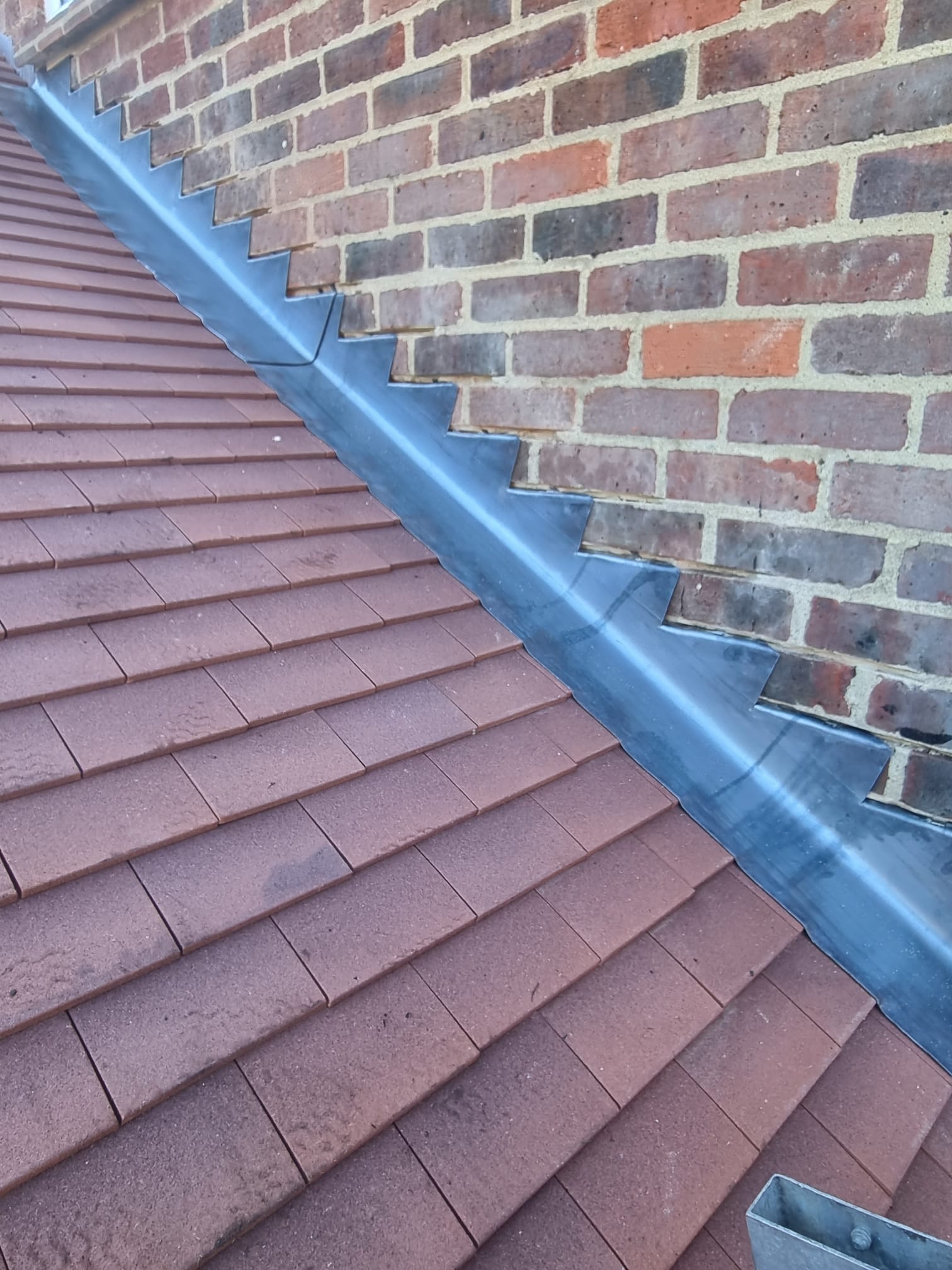+44 7853 968135
Can you replace just a few roof tiles?
Homeowners across the UK often find themselves staring up at damaged roof tiles after storms, wondering whether they need to replace their entire roof or if spot repairs will suffice. The good news is that replacing just a few roof tiles is not only possible but often the most practical and cost-effective solution for localised damage.
Understanding when partial roof tile replacement is appropriate can save you thousands of pounds whilst maintaining your home’s weather protection. This comprehensive guide explores everything you need to know about selective roof tile replacement, from identifying suitable candidates to understanding costs and professional requirements.
Can You Replace Individual Roof Tiles?
Replacing individual roof tiles is absolutely feasible and represents standard practice in the UK roofing industry. Most roof tile systems are designed with overlapping patterns that allow individual tiles to be removed and replaced without disturbing the entire roof structure.
The key to successful individual tile replacement lies in understanding your roof’s construction method and tile type. Clay tiles, concrete tiles, and slate tiles each have specific removal techniques, but all can typically be replaced individually when damaged. Professional roofers regularly perform single tile replacements as part of routine maintenance, proving that selective replacement is both practical and effective.
Need some Support with your Roof Tiling? Speak with a member of our Professional Roof tiling Team here

Can You Replace Only a Few Tiles?
Replacing only a few tiles at once is not just possible but often represents the most sensible approach to roof maintenance. This targeted method allows homeowners to address specific problem areas without incurring the expense of comprehensive roof replacement.
The success of partial tile replacement depends largely on the age and condition of surrounding tiles. When neighbouring tiles remain structurally sound and properly sealed, replacing just the damaged ones maintains the roof’s integrity whilst minimising disruption and cost. However, if multiple tiles across different roof sections show signs of deterioration, a more comprehensive replacement strategy might prove more economical in the long term.
Can You Replace Just One Section of a Roof?
Sectional roof replacement offers an excellent middle ground between individual tile replacement and complete roof renewal. This approach works particularly well when storm damage affects a specific roof area or when one section has aged differently due to varying sun exposure or weather patterns.
Professional roofers can seamlessly integrate new sections with existing roofing by carefully matching tile types, colours, and installation methods. The key consideration is ensuring proper water drainage and maintaining consistent roof lines across the transition areas. According to UK building regulations, any substantial roof work must comply with current standards, particularly regarding insulation and ventilation requirements.
How Much Does It Cost to Replace a Few Roof Tiles?
The cost of replacing a few roof tiles varies significantly based on tile type, accessibility, and local labour rates across the UK. Understanding these cost factors helps homeowners budget appropriately and make informed decisions about repair timing.
| Tile Type | Cost per Tile (Material) | Labour Cost per Tile | Total Cost Range |
|---|---|---|---|
| Clay Tiles | £0.50 – £3.00 | £15 – £25 | £15.50 – £28.00 |
| Concrete Tiles | £0.30 – £1.50 | £15 – £25 | £15.30 – £26.50 |
| Slate Tiles | £3.00 – £12.00 | £20 – £35 | £23.00 – £47.00 |
| Specialist Tiles | £5.00 – £20.00 | £25 – £45 | £30.00 – £65.00 |
Additional costs often include scaffolding rental, waste disposal, and minimum call-out charges, which typically range from £150 to £300 depending on your location. Many roofing contractors apply minimum charges for small jobs, making it economical to address multiple tiles simultaneously rather than calling out professionals repeatedly for individual tile replacements.
Professional Installation Considerations
Whilst replacing roof tiles might appear straightforward, professional installation ensures compliance with building standards and maintains warranty coverage. Working at height requires proper safety equipment and insurance coverage that most homeowners lack.
Professional roofers bring expertise in identifying underlying issues that might not be immediately visible, such as damaged battens, compromised felt, or inadequate ventilation. They also understand local building regulations and can ensure that repair work meets current standards. Many insurance policies require professional installation for roof repairs, making DIY approaches potentially costly if future claims arise.
Planning permission requirements rarely apply to like-for-like tile replacement, but significant changes to roof appearance or structure might require local authority approval. Professional contractors understand these regulations and can advise on compliance requirements, ensuring your repairs don’t create future legal complications.
Timing and Weather Considerations
Successful roof tile replacement requires appropriate weather conditions and careful timing considerations. Dry conditions are essential for proper installation, as wet tiles and underlying materials can compromise adhesion and waterproofing.
| Season | Suitability | Advantages | Disadvantages |
|---|---|---|---|
| Spring | Excellent | Mild weather, good availability | Higher demand, premium pricing |
| Summer | Good | Dry conditions, extended daylight | Peak pricing, contractor availability |
| Autumn | Excellent | Moderate weather, competitive pricing | Weather window closing |
| Winter | Poor | Lower prices, good availability | Weather delays, limited working hours |
Emergency repairs should proceed regardless of season when interior damage threatens, but planned maintenance works best during stable weather periods. Professional roofers often schedule small repair jobs during quieter periods, potentially offering better pricing and faster completion times.
Can You Replace Just a Few Roof Tiles: Final Recommendations
Replacing just a few roof tiles represents a practical, cost-effective approach to maintaining your home’s weather protection without unnecessary expense. This targeted repair strategy works particularly well for storm damage, isolated wear, or addressing specific problem areas whilst preserving the majority of your existing roof system.
The decision between partial and complete roof replacement should consider the age and overall condition of your existing tiles, the extent of damage, and your long-term maintenance plans. Professional assessment ensures you make informed decisions that balance immediate repair needs with future maintenance requirements.
Success with partial roof tile replacement depends on matching existing materials, maintaining proper installation techniques, and ensuring compliance with current building standards. When executed properly, selective tile replacement can extend your roof’s lifespan significantly whilst addressing immediate weather protection concerns.
Need Help with Tile Roofing? Talk to one of our Professional Tile Roofing Experts today!
Can You Replace Just a Few Roof Tiles: Frequently Asked Questions
Individual roof tile replacements should last as long as the original tiles when properly installed, typically 30-60 years depending on material type. The longevity depends on matching tile quality, proper installation techniques, and ensuring adequate ventilation and waterproofing around the replacement area.
Whilst technically possible for experienced DIY enthusiasts, roof tile replacement involves significant safety risks and potential insurance implications. Professional installation ensures compliance with building regulations, maintains warranty coverage, and includes proper safety measures that most homeowners cannot replicate.
Visible cracks, missing pieces, loose tiles that move when touched, or water stains on interior ceilings indicate tile replacement needs. Additionally, moss growth, colour fading, or tiles that sound hollow when tapped may suggest deterioration requiring professional assessment.
Professional roofers can identify tile manufacturers, sizes, and colour variations to ensure seamless matching. Taking high-resolution photos and tile samples to roofing suppliers helps identify suitable replacements, though some weathering differences between old and new tiles typically even out over time.
Most home insurance policies cover like-for-like tile replacement as routine maintenance, but significant repairs might require notification. Professional installation and keeping repair receipts ensures compliance with insurance requirements and supports future claims if additional damage occurs.
Professional roofers assess batten condition, roof felt integrity, and structural soundness during tile replacement. If underlying damage is discovered, repairs must address these issues before tile replacement to prevent future problems and ensure weatherproofing effectiveness.
Mixing tile types is generally not recommended as different materials have varying expansion rates, weights, and installation requirements. Successful mixing requires professional assessment to ensure structural compatibility and weatherproofing integrity across different material types.
Damaged tiles should be replaced as soon as weather conditions permit to prevent water ingress and interior damage. Temporary repairs using tarpaulins or emergency sealants can provide short-term protection, but permanent replacement should occur within weeks rather than months.
Like-for-like tile replacement typically doesn’t require planning permission under permitted development rights. However, changing tile types, colours, or materials in conservation areas or listed buildings may require local authority approval before work begins.
Tile type, roof accessibility, height, local labour rates, and minimum call-out charges significantly impact replacement costs. Additional factors include scaffolding requirements, waste disposal fees, and whether underlying repairs are needed during the replacement process.
Wind speeds above 25mph, rain, ice, or snow conditions make roof work unsafe and ineffective. Professional contractors monitor weather forecasts and may postpone work to ensure proper installation conditions and worker safety compliance.
Verify contractor credentials through trade associations, check insurance coverage and public liability policies, and request local references from recent work. Competent Person Scheme members or NFRC certified contractors provide additional assurance of professional standards and regulatory compliance.
Professional installations typically include 12-24 month workmanship warranties covering installation defects, while tile manufacturers provide separate material warranties. Ensure warranty terms are clearly documented and understand what circumstances might void coverage before work begins.
Regular professional inspections, prompt vegetation removal, gutter maintenance, and addressing minor issues quickly prevent extensive damage. According to roof tile maintenance guidance, annual inspections and proactive maintenance significantly extend roof system lifespan and reduce emergency repair requirements.

